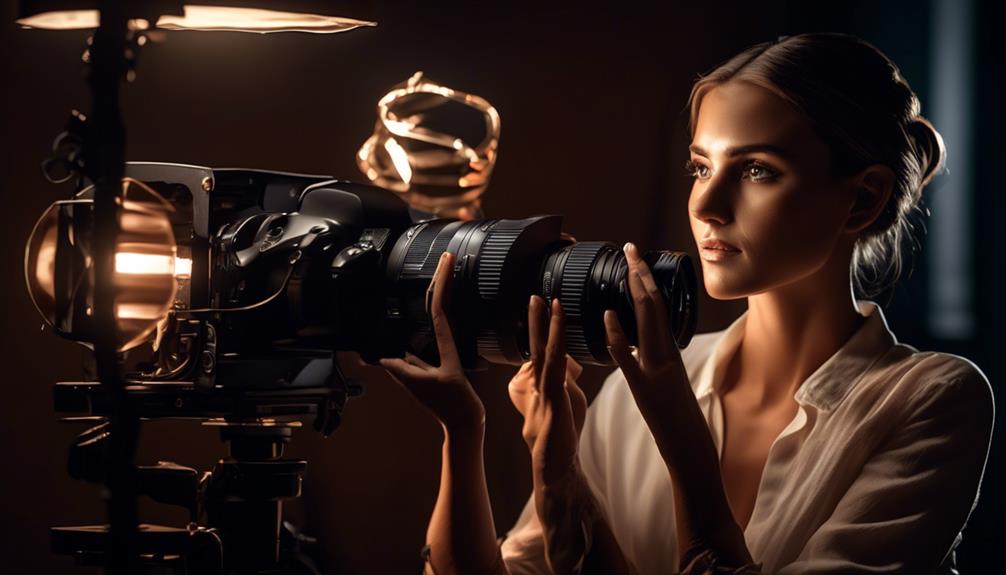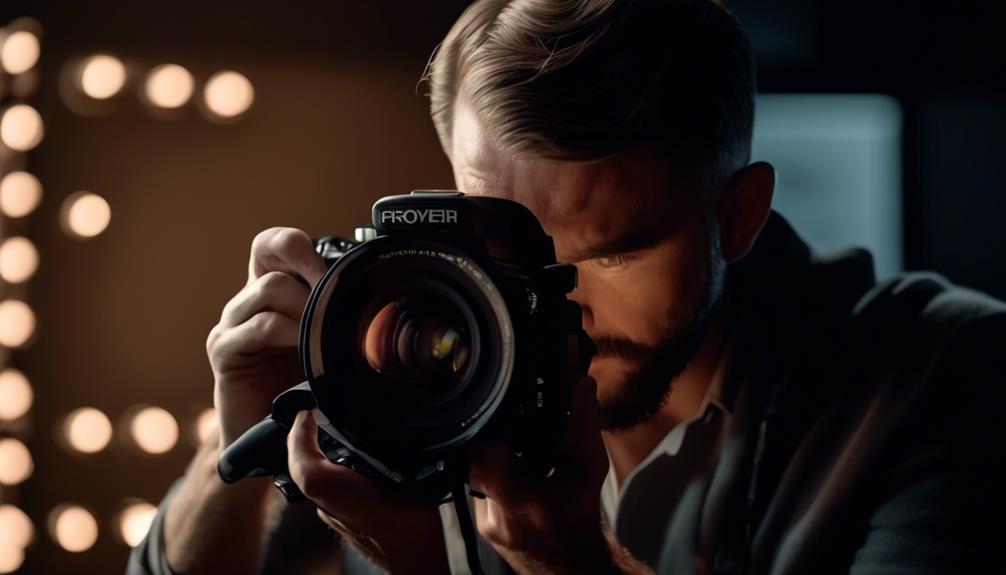Please note this post may contain affiliate links picked by me (Jay) that I have deemed may be of interest or relevant to you the reader of this.
These links do not affect the cost of the thing if you decide to purchase but i may get a little money if you choose to purchase.
For more information on my affiliate link policy click here.
When it comes to capturing stunning portraits, lighting is the unsung hero, the secret sauce that elevates an image from good to great. It's the subtle dance between shadows and highlights that brings out the subject's features and emotions, creating a visual masterpiece.
So, if you're ready to take your portrait lighting skills to the next level, I've got three invaluable tips that will transform your photography game. Prepare to unlock the power of strategic lighting placement, harness the magic of natural light, and wield the artistry of artificial lighting techniques.
Buckle up, because we're about to embark on a journey that will forever change the way you see and capture the human face.
Key Takeaways
- Lighting placement is crucial for enhancing portrait photography skills.
- Natural light can create stunning portraits with a soft and ethereal quality.
- Mastering the use of natural light, including golden hour lighting, can create a dreamy atmosphere.
- Incorporating artificial lighting techniques allows for creative control and enhances portrait photography.
Understanding the Importance of Lighting Placement
Understanding the importance of lighting placement is crucial for enhancing portrait photography skills. When it comes to capturing the perfect portrait, lighting is key. The way you position your lights can dramatically change the mood and feel of your photograph. It's not just about having the right lighting equipment, but also about using lighting techniques effectively.
One of the most basic lighting techniques in portrait photography is the three-point lighting setup. This setup consists of a key light, a fill light, and a backlight. The key light is the main light source and is usually placed to one side of the subject. It provides the primary illumination and helps define the subject's features. The fill light is used to fill in the shadows created by the key light and is placed on the opposite side of the subject. The backlight, as the name suggests, is positioned behind the subject and adds depth by separating the subject from the background.
Another important lighting technique to consider is the use of natural light. Natural light can create stunning portraits with a soft and ethereal quality. The key to using natural light effectively is to pay attention to the direction and intensity of the light. For example, shooting during golden hour, the hour after sunrise or before sunset, can result in warm and flattering light. Additionally, diffusing natural light through curtains or a sheer fabric can create a soft and diffused light that's ideal for portraits.
Mastering the Use of Natural Light
Now let's dive into the art of harnessing natural light to create captivating portraits that radiate a soft and ethereal quality. Natural light has a magical quality that can elevate your portraits to a whole new level. Here are some tips to help you master the use of natural light:
- Harnessing golden hour lighting: The golden hour, which occurs shortly after sunrise or before sunset, offers the most beautiful and flattering light for portraits. The warm, golden tones create a soft and dreamy atmosphere that enhances the natural beauty of your subject.
- Creating dramatic shadows: Shadows can add depth and dimension to your portraits. Experiment with different angles and positions to capture interesting shadow patterns on your subject's face. This can create a sense of mystery and drama, adding an artistic touch to your photographs.
- Using reflectors: Reflectors are a valuable tool when working with natural light. They bounce light back onto your subject, filling in shadows and creating a more even and flattering lighting setup. Experiment with different reflector colors to achieve different effects.
- Finding open shade: Direct sunlight can be harsh and unflattering. Look for areas of open shade, such as under a tree or against a building, where the light is diffused and soft. This will create a gentle and flattering light on your subject's face.
- Playing with backlighting: Backlighting can create a beautiful halo effect around your subject and add a sense of magic to your portraits. Position your subject in front of a light source, such as the sun, and experiment with different angles to achieve the desired effect.
Mastering the use of natural light is a skill that takes time and practice. By harnessing golden hour lighting, creating dramatic shadows, using reflectors, finding open shade, and playing with backlighting, you can create captivating portraits that truly stand out.
Utilizing Artificial Lighting Techniques
Let's dive into the exciting world of artificial lighting techniques and discover how they can enhance your portrait photography. While natural light can create stunning images, incorporating artificial lighting techniques allows for more creative control over the final result. By balancing ambient light with artificial lighting, you can achieve unique and visually appealing portraits that stand out from the crowd.
One of the most effective ways to utilize artificial lighting is by using a technique called "Three-Point Lighting." This technique involves using three light sources strategically placed around the subject to create dimension and depth. The three lights are typically referred to as the key light, fill light, and backlight. The key light is the main light source and provides the primary illumination, while the fill light fills in any shadows, and the backlight adds separation between the subject and the background.
To further emphasize the importance of balancing ambient light, consider the following table:
| Lighting Technique | Description |
|---|---|
| High Key Lighting | Creates a bright and airy look by overexposing the image, often used for fashion or beauty portraits. |
| Low Key Lighting | Creates a dramatic effect by using minimal light, resulting in deep shadows and high contrast. Ideal for creating moody or mysterious portraits. |
| Rembrandt Lighting | Named after the famous painter, this technique creates a triangle-shaped highlight on one side of the face, adding depth and dimension. |
| Split Lighting | Divides the face into equal halves, with one side illuminated and the other in shadow. It creates a bold and dramatic effect. |
Frequently Asked Questions
What Are Some Common Mistakes to Avoid When Placing Lighting for Portraits?
When it comes to lighting placement for portraits, there are some common mistakes that we should avoid.
One of them is placing the light source too close to the subject, resulting in harsh and unflattering shadows.
Another mistake is failing to consider the direction of the light, which can affect the mood and dimension of the portrait.
Lastly, forgetting to use reflectors or diffusers to control the light can lead to overexposure or underexposure in certain areas.
Can You Provide Some Tips on How to Find the Best Natural Lighting for Outdoor Portrait Photography?
When it comes to outdoor portrait photography, finding the best natural lighting can make all the difference.
Here are some tips on how to utilize natural lighting to enhance your outdoor portraits.
First, look for soft, diffused light, such as during golden hour or on overcast days.
Position your subject so that the light falls on their face evenly.
Experiment with different angles and positions to create interesting shadows and highlights.
Don't be afraid to get creative and let the natural light bring your portraits to life.
Are There Any Specific Artificial Lighting Techniques That Work Well for Indoor Portraits?
Artificial lighting techniques for indoor portraits can really take your photography to the next level. There are so many possibilities when it comes to indoor portrait lighting setups.
One technique that works well is using a softbox to create a soft and even light on your subject's face.
Another option is to use a reflector to bounce light onto your subject and fill in any shadows.
Experimenting with different lighting setups will help you find your own unique style and bring your portraits to life.
How Can I Achieve a Natural-Looking Portrait With Artificial Lighting?
To achieve a natural-looking portrait with artificial lighting, it's important to focus on two key elements: realistic skin tones and creating depth and dimension.
By using a combination of diffused and directional lighting, you can soften harsh shadows and bring out the natural contours of the face.
Experiment with different light modifiers and positions to find the perfect balance.
Don't be afraid to get creative and try new techniques to achieve innovative results that will wow your audience.
What Are Some Alternative Lighting Sources That Can Be Used for Creative Portrait Lighting?
When it comes to creative portrait lighting, thinking outside the box is key. Incorporating unconventional light sources can truly elevate your portraits and give them a unique touch.
From using fairy lights to create a dreamy atmosphere, to experimenting with colored gels for a pop of vibrancy, there are endless possibilities.
Don't be afraid to explore and push the boundaries of traditional lighting techniques. Let your imagination run wild and watch your portraits come to life in ways you never thought possible.
Conclusion
In conclusion, by understanding the importance of lighting placement, mastering the use of natural light, and utilizing artificial lighting techniques, you can elevate your portrait photography to new heights.
Just like a painter uses brush strokes to create a masterpiece, a photographer uses light to paint a compelling picture.
So let your creativity shine and explore the endless possibilities that light offers.
With these tips, your portrait lighting skills will surely sparkle and captivate viewers.
Happy shooting!


